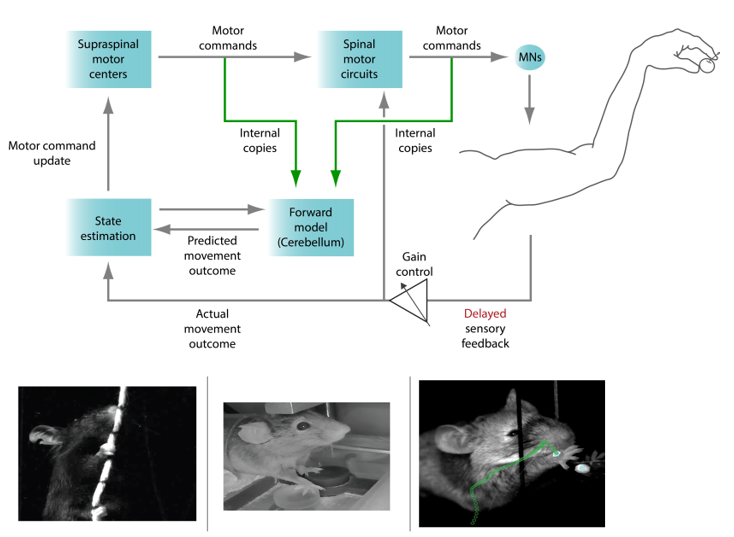You are here
Sensorimotor Circuits for Dexterous Movement
Speakers
Abstract
A critical challenge for the mammalian motor system is managing the intricate coordination of dozens of limb muscles to interact with the world with speed and dexterity. Coordinated movements emerge from dynamic interactions between feedforward command pathways that induce muscle contraction and feedback pathways that report and refine movement. Yet within this general framework, the specific mechanisms by which command and feedback interact remain poorly understood. Combining molecular, anatomical, electrophysiological, behavioral, and modeling approaches in mice, our work focuses on defining how interactions between motor and sensory circuits throughout the neuraxis establish the coordination and precision of dexterous behaviors. I will focus on complementary projects at different ends of the sensorimotor system: circuits that regulate the impact that sensory feedback has on movement, and circuits that adjust feedforward commands to ensure accuracy and precision. 1) While dexterity relies on the constant transmission of sensory information, unchecked feedback can be disruptive to behavior. We have uncovered anatomical and functional circuit architecture in the brainstem cuneate nucleus that can attenuate or amplify tactile feedback from the hands to facilitate successful behavior. We are now exploring how top-down pathways bidirectionally regulate the transmission of somatosensory information to ensure appropriate sensitivity to the environment. 2) The cerebellum is essential for coordinating a vast array of motor behaviors. A prominent theory in the field is that outgoing motor commands are copied and conveyed to the cerebellum to generate predictions of impending movement outcome that can be used to update ongoing motor output. We are exploring the organization and function of cerebellar input and output pathways that facilitate rapid refinement to enable dexterity. Toward these goals, we are also developing new quantitative assays as well computer vision and machine learning-based data analysis approaches for more high-throughput, unbiased perspectives on movement execution.


